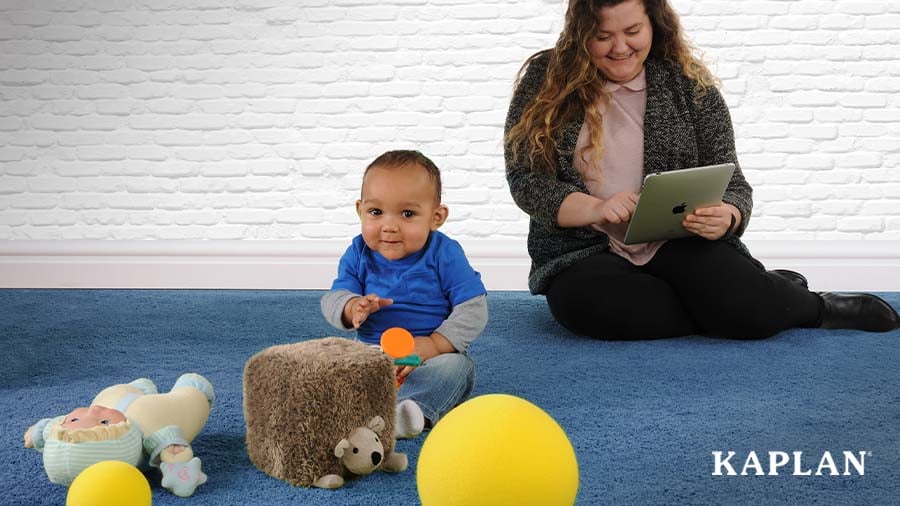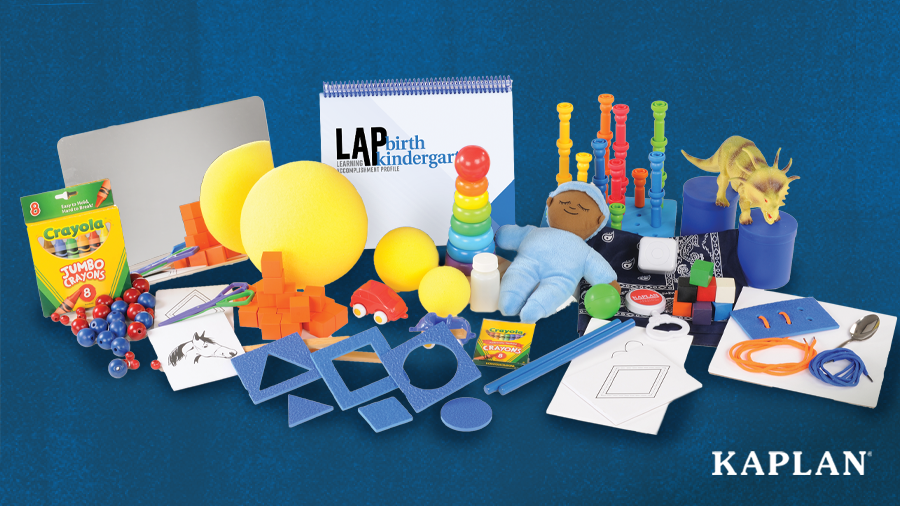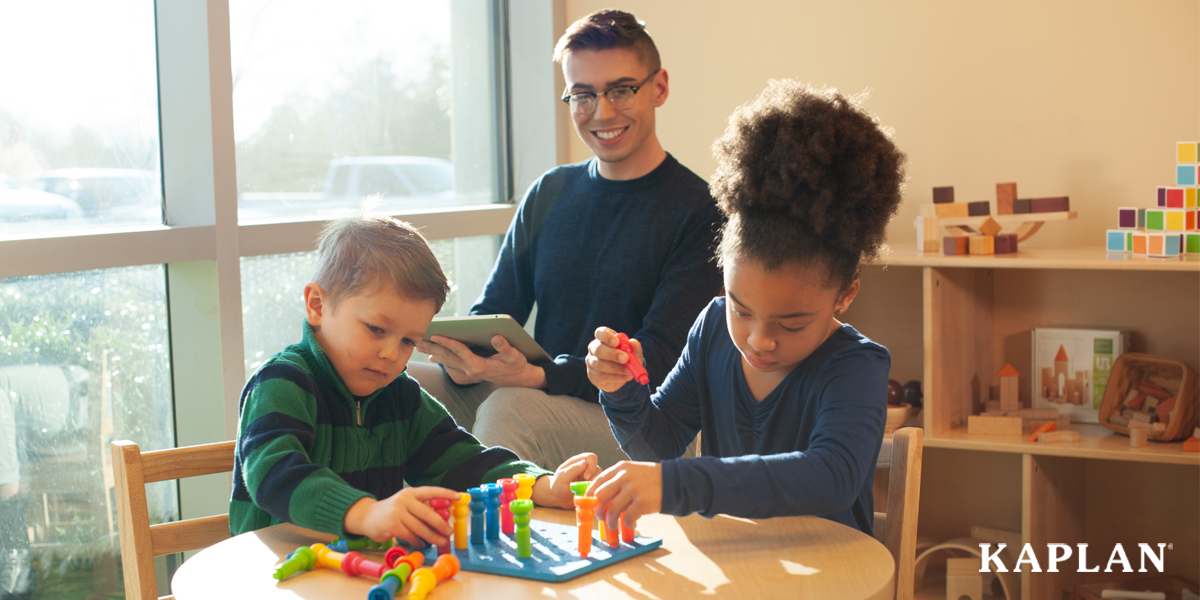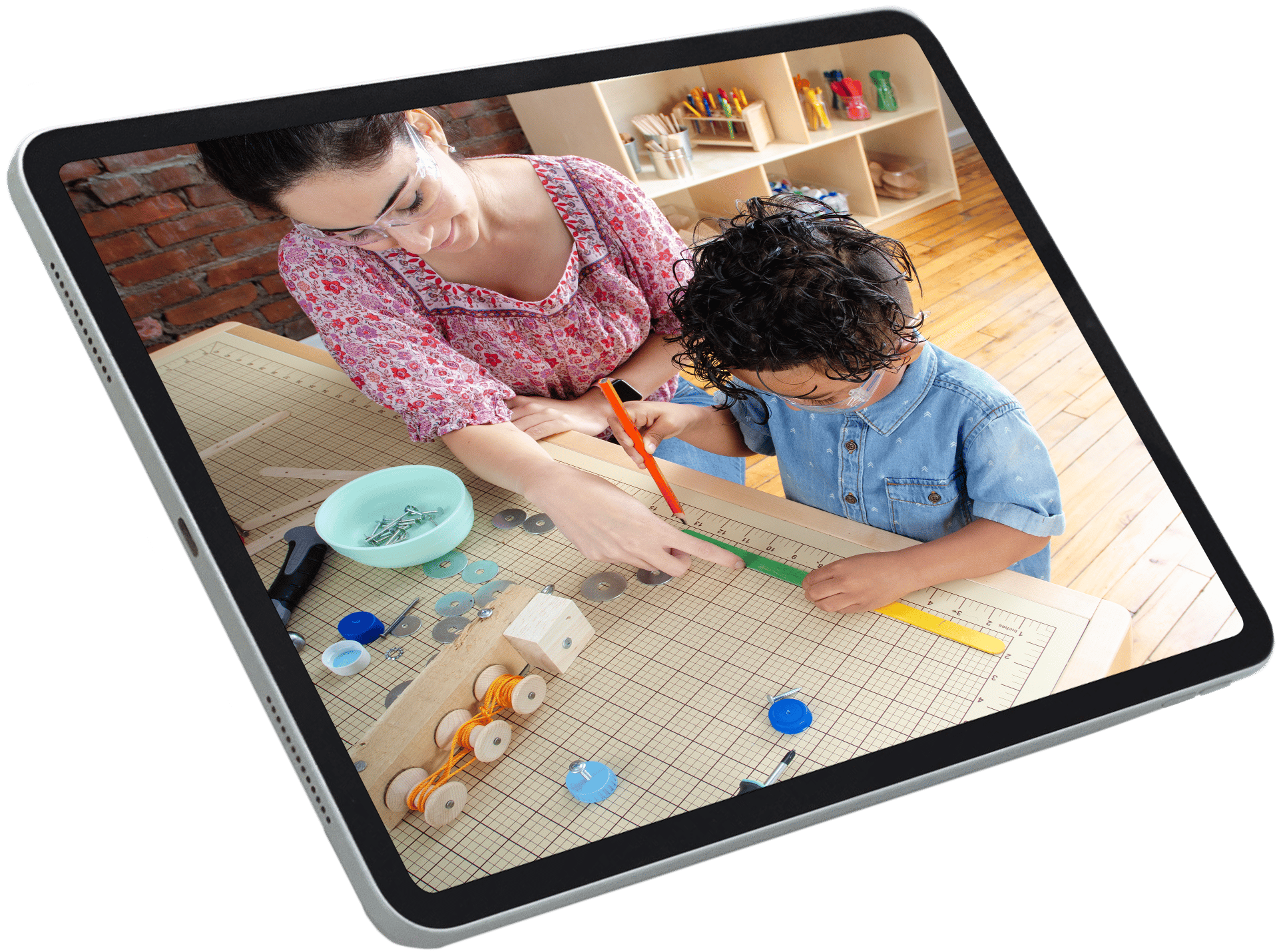Choosing the right assessment tool for your early childhood program is a meaningful decision that directly impacts how you understand, support, and celebrate each child’s development. With so many screening, diagnostic, and achievement tools available today, it can be challenging to know which will truly help you drive positive outcomes for the children in your care.
Standardized or summative evaluations, for example, capture a limited view of a child's early learning, according to NAEYC's Spotlight on Young Children: Observation and Assessment. These tools typically focus on isolated skills in a controlled setting, often missing the deeper, more nuanced aspects of learning, such as how the child interacts with others, solves problems, and uses their body to move and play.
Enter the Learning Accomplishment Profile (LAP)™. The LAP™ is a formative, observation-based assessment tool that evaluates children's actual skills and behavior in natural, familiar settings. Assessment is also continuous, providing a more accurate view of children's developmental progress. In this article, we'll explore what sets the LAP apart and why it's the go-to tool for authentic early childhood assessments.
What is the Learning Accomplishment Profile (LAP)™, and what does it assess?
The Learning Accomplishment Profile (LAP)™ measures acquired and emerging skills of children in the birth through five-year age range through ongoing observation. The LAP Birth to Kindergarten (LAP B-K) observes children's development across six domains:- Gross motor
- Fine motor/pre-writing
- Cognitive
- Language
- Social-emotional
- Executive function
With insights from the LAP assessment, educators gain a clear view of each child's progress. These insights enable them to adjust their teaching in real time, ensuring children continue to learn and thrive in school and beyond.

Why do early childhood educators choose LAP for authentic assessments?
Children are growing and learning new skills as they interact with the world around them. Experiences outside the classroom can alter how they think, engage, and move from week to week. Relying on an assessment that evaluates a single skill or behavior can limit your view of each child's actual progress.
Take counting skills as an example. It may not be easy to engage young children in a structured assessment task, such as reciting numbers out of context. However, observing children counting blocks during play captures this skill in a way that feels familiar to them.
That's where the LAP comes in. Educators can gather meaningful and easy-to-interpret data about children's development, track progress in real-time, log skill development between assessments, and use their notes to guide lesson planning. Engaging children in actual classroom tasks also delivers valuable insights into how they might navigate difficulties or distractions, helping educators refine their teaching approach.
- Up-close, ongoing observation
- Educators' anecdotal notes
- Samples of children's drawings and constructions
- Records of conversations with teachers and peers
With the LAP, educators observe children in the natural flow of their day. They can document children's skills over time rather than scheduling formal, one-time sessions. The assessment also utilizes evidence, such as peer-to-peer conversations and artwork, to evaluate children’s progression.
The table below illustrates the differences between standardized, summative assessments and formative tools, such as the LAP.
|
Formative assessments |
Standardized, summative assessments |
|
|
Purpose |
Monitors learning during the process |
Evaluate learning after instruction is completed |
|
Timing |
Ongoing and frequent |
Occurs at the end of a developmental stage |
|
Setting |
Takes place in natural, everyday environments like the classroom or playground |
Typically takes place in a structured or standardized setting |
|
Activities |
Observations, checklists, or documentation during real activities and routines (e.g., block play or snack time) |
Standardized tests, milestone checklists, or formal performance evaluations |
|
Authenticity (reflection of actual skills) |
High authenticity: Assesses children as they're engaged in real, meaningful tasks |
Lower authenticity: Assessments typically focus on isolated skills or behaviors outside of context |
|
Instruction use |
Helps early educators adjust teaching strategies to support learning in real-time |
Used to report progress or make programmatic decisions, and not to guide immediate teaching strategies. |

What sets the LAP apart from other formative assessments?
So, why do early childhood administrators prefer the LAP over other formative assessments? Yes, the LAP offers a proven and reliable method for assessing the development of young children across key domains. But it also helps program leaders improve their teaching, align with school readiness goals, and confidently meet the diverse needs of children.Here are the LAP's key features:
- Standards alignment: Aligns to state standards and the Head Start Learning Outcomes Framework.
- Adaptability: Offers a comprehensive view of a child's progress, providing individualized support tailored to their specific needs.
- Easy-to-use interface: Features simple navigation, quick reference guides, and automatic scoring to simplify the assessment process.
- Flexible reports: Provides easy-to-read reports to engage families, clinicians, and other program stakeholders in a child's development.
- Online activity catalog: Delivers developmentally appropriate activities to support instruction and lesson planning.
- Accessibility: Allows educators to gather and record data on the go with mobile access.
Transform everyday learning moments into meaningful insights with the Learning Accomplishment Profile (LAP)™
When it comes to measuring actual early learning skills, the LAP stands out for its authentic, observation-based approach. It enables educators to gather meaningful data, accurately gauge children's progress, and apply effective teaching strategies to enhance learning outcomes.
Kaplan offers a suite of LAP products to incorporate reliable, meaningful, and ongoing assessment in your early childhood program, including the LAP B-K™, E-LAP™, LAP™-3, and diagnostic tools. You'll also find additional training resources, such as the LAP B-K Illustration Manual and implementation training.
Explore our LAP products today to gain a deeper understanding of each child’s growth and discover developmentally appropriate teaching strategies to support every child’s unique learning journey.

